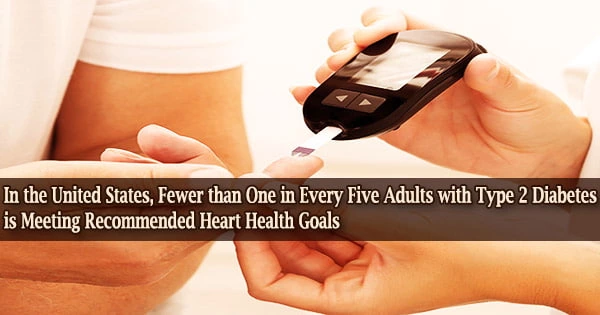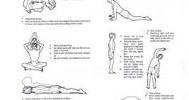In the United States, fewer than one in every five persons with Type 2 diabetes is meeting goals to lower their risk of heart disease. According to a new American Heart Association scientific statement published today (January 10, 2022) in the Association’s flagship journal Circulation, current medicines can help when paired with novel approaches that address social determinants of health and other barriers to care.
A scientific statement is a professional review of current research that may influence future clinical practice standards.
“This new scientific statement is an urgent call to action to follow the latest evidence-based approaches and to develop new best practices to advance Type 2 diabetes treatment and care and reduce CVD risk,” said Joshua J. Joseph, M.D., M.P.H., FAHA, chair of the statement writing group and an assistant professor of medicine in the division of endocrinology, diabetes, and metabolism at The Ohio State University College of Medicine in Columbus, Ohio.
“Far too few people less than 20% of those with Type 2 diabetes are successfully managing their heart disease risk, and far too many are struggling to stop smoking and lose weight, two key CVD risk factors. Health care professionals, the health care industry, and broader community organizations all have an important role to play in supporting people with Type 2 diabetes.”
According to the United States Centers for Disease Control and Prevention’s 2020 National Diabetes Statistics Report, Type 2 diabetes affects more than 34 million people in the United States, accounting for nearly 11% of the population, and cardiovascular disease (CVD) is the leading cause of death and disability among people with Type 2 diabetes (T2D).
Type 2 diabetes develops when the body’s insulin is inefficiently used or when the pancreas’ ability to create insulin is lost. Other cardiovascular disease risk factors, such as overweight or obesity, high blood pressure, or high cholesterol, are common in people with T2D. Individuals with T2D are twice as likely as non-T2D adults to die from CVD, such as heart attacks, strokes, and heart failure.
The new scientific statement addresses the gap between existing data on how to best minimize cardiovascular risk in persons with T2D and the reality for people with T2D, based on the writing group’s detailed analysis of clinical trial outcomes until June 2020.
Managing blood glucose, blood pressure, and cholesterol levels; increasing physical activity; good diet; obesity and weight management; not smoking; not drinking alcohol; and psychosocial care are all targets for lowering CVD risk in patients with T2D. People with T2D who live a more overall healthy lifestyle had a lower risk of CVD and CVD death.
This new scientific statement is an urgent call to action to follow the latest evidence-based approaches and to develop new best practices to advance Type 2 diabetes treatment and care and reduce CVD risk. Far too few people less than 20% of those with Type 2 diabetes are successfully managing their heart disease risk, and far too many are struggling to stop smoking and lose weight, two key CVD risk factors. Health care professionals, the health care industry, and broader community organizations all have an important role to play in supporting people with Type 2 diabetes.
Joshua J. Joseph
“In the United States, less than 1 in 5 adults with T2D not diagnosed with cardiovascular disease are meeting optimal T2D management goals of not smoking and achieving healthy levels of blood sugar, blood pressure, and low-density lipoprotein (LDL) cholesterol, also known as ‘bad’ cholesterol,” Joseph said.
Modifiable lifestyle and sociocultural factors account for a surprise high percentage of factors that can help people with T2D control their CVD efficiently, up to 90%.
“Social determinants of health, which include health-related behaviors, socioeconomic factors, environmental factors, and structural racism, have been recognized to have a profound impact on cardiovascular disease and Type 2 diabetes outcomes,” he said. “People with T2D face numerous barriers to health including access to care and equitable care, which must be considered when developing individualized care plans with our patients.”
For T2D and CVD management to be successful, patients and health care professionals must work together to make decisions. A comprehensive diabetes care plan should be tailored based on the patient’s individual risks and benefits, as well as potential cost concerns; support to effectively manage T2D and take medications as prescribed, including diabetes self-management education and support; promotion and support of healthy lifestyle choices that improve cardiovascular health, such as nutrition and physical activity; and treatment for any other CVD risk factors.
“One avenue to continue to address and advance diabetes management is through breaking down the four walls of the clinic or hospital through community engagement, clinic-to-community connections and academic-community-government partnerships that may help address and support modifiable lifestyle behaviors such as physical activity, nutrition, smoking cessation and stress management,” Joseph said.
Recent research on treating T2D is also highlighted in the statement, which may prompt clinicians and patients to reassess and revise their T2D care plans to include CVD risk factors:
New ways to control blood sugar
The American Heart Association’s most recent scientific statement on blood sugar regulation was released in 2015, just as evidence began to demonstrate that glucose-lowering drugs could also cut the risk of heart attack, stroke, heart failure, and cardiovascular death.
“Since 2015, a number of important national and international clinical trials that specifically examined new T2D medications for lowering cardiovascular disease and cardiovascular mortality risk among people with Type 2 diabetes have been completed,” Joseph said. “GLP-1 (glucagon-like pepdite-1) receptor agonists have been found to improve blood sugar and weight, and they have been game-changers in reducing the risk of heart disease, stroke, heart failure, and kidney disease.”
GLP-1 drugs (injectable synthetic hormones like liraglutide and semaglutide) boost insulin release to control blood sugar, as well as suppress appetite and help patients feel full, which may aid weight management or weight loss.
SGLT-2 (sodium-glucose co-transporter 2) inhibitors (oral drugs including canaglifozin, dapagliflozin, ertugliflozin, and empagliflozin) have also been shown to reduce the risk of CVD and chronic kidney disease. SGLT-2 inhibitors encourage the kidneys to excrete excess glucose in the urine, reducing the risk of heart failure and slowing the renal function decline that is typical in persons with T2D.
“Cost may be a barrier to taking some T2D medications as prescribed, however, many of these medications are now more commonly covered by more health insurance plans,” Joseph said.
“Another barrier is recognition by patients that these newer T2D medications are also effective in reducing the risk of heart disease, stroke, heart failure, and kidney disease. Increasing public awareness about the link between CVD and T2D and provide support, education, and tools that help improve T2D and reduce CVD risk are at the core of the Know Diabetes by Heart™ initiative, from the American Heart Association and American Diabetes Association.”
Personalized blood pressure control
Individualized ways to treating high blood pressure are ideal, according to the statement. These techniques should take into account ways to reduce the negative effects of hypertension medication while also avoiding over-treating vulnerable people.
Importance of lowering cholesterol levels
Statin drugs are still the first line of lipid-lowering therapy, but the American Heart Association recommends that persons who are unable to tolerate a statin or who aren’t meeting their LDL cholesterol objectives with a statin investigate other options.
Depending on the individual’s overall health status and other health issues, these drugs may include ezetimibe, bempodoic acid, bile acid resins, fibrates, and PCSK-9 inhibitors.
Re-thinking aspirin use
T2D patients who are 65 years or older are more likely to take a daily low-dose aspirin to assist prevent cardiovascular disease than those who do not have T2D. It may, however, be time to reconsider whether daily low-dose aspirin is still necessary.
According to new research, the danger of significant bleeding from aspirin may outweigh the benefits for some people, and newer, more strong antiplatelet drugs may be more helpful. The declaration emphasizes the significance of a multidisciplinary, tailored approach to lowering CVD risk in T2D patients.
Healthy lifestyle strategies, as well as drugs and/or treatments, including surgery, that improve T2D management and support a healthy weight and weight loss, should all be included in optimal care. Important elements to explore and address include social determinants of health, structural racism, and health equity.
The scientific statement was prepared by the volunteer writing group on behalf of the American Heart Association’s Diabetes Committee of the Council on Lifestyle and Cardiometabolic Health; the Council on Arteriosclerosis, Thrombosis and Vascular Biology; the Council on Clinical Cardiology; and the Council on Hypertension.
Scientific statements from the American Heart Association help people learn more about cardiovascular illnesses and strokes and make better health-care decisions. Scientific statements describe what is currently known about a subject and what areas require further investigation.
While scientific statements can drive the establishment of guidelines, they do not provide clinical advice. The American Heart Association’s official clinical practice recommendations are found in its guidelines.
















